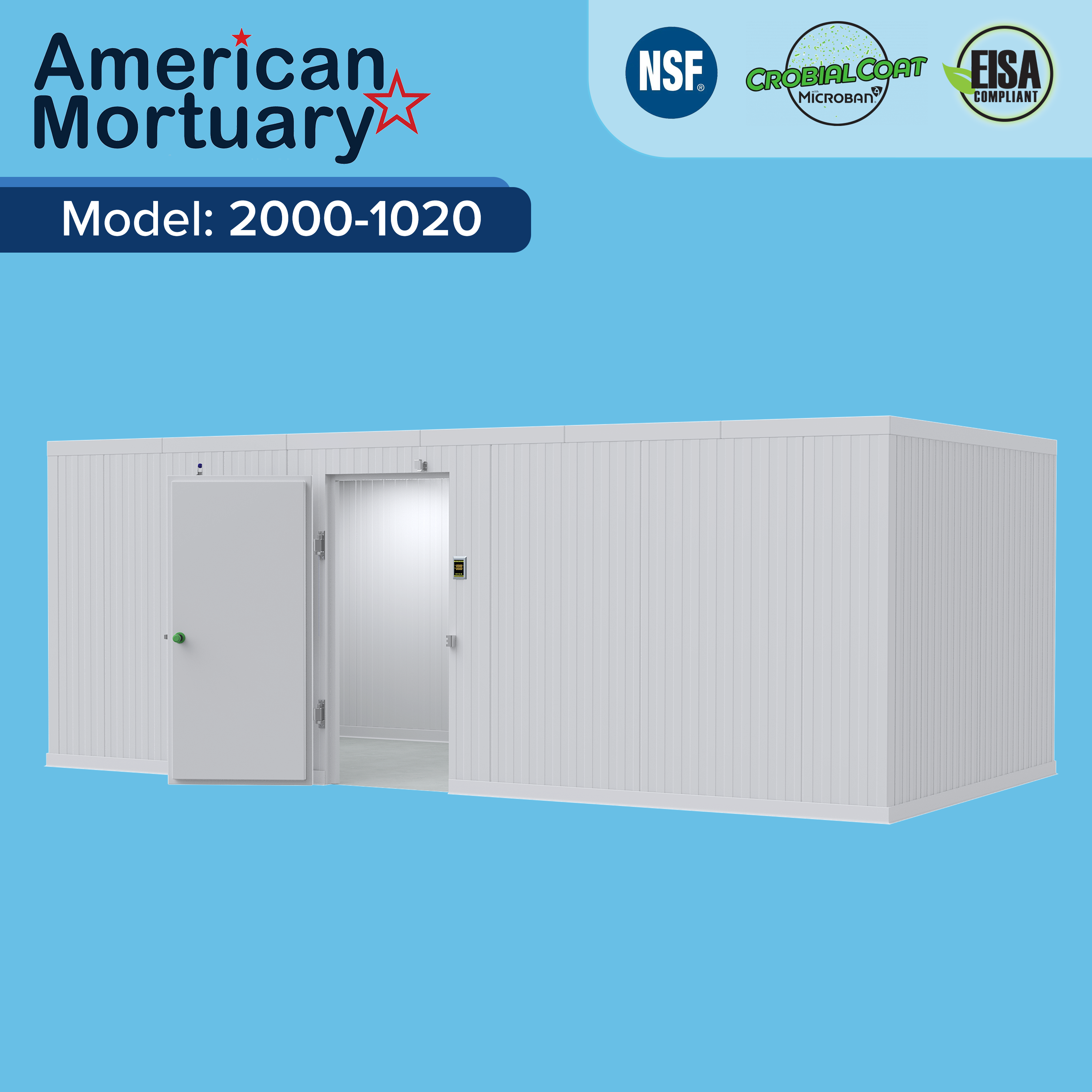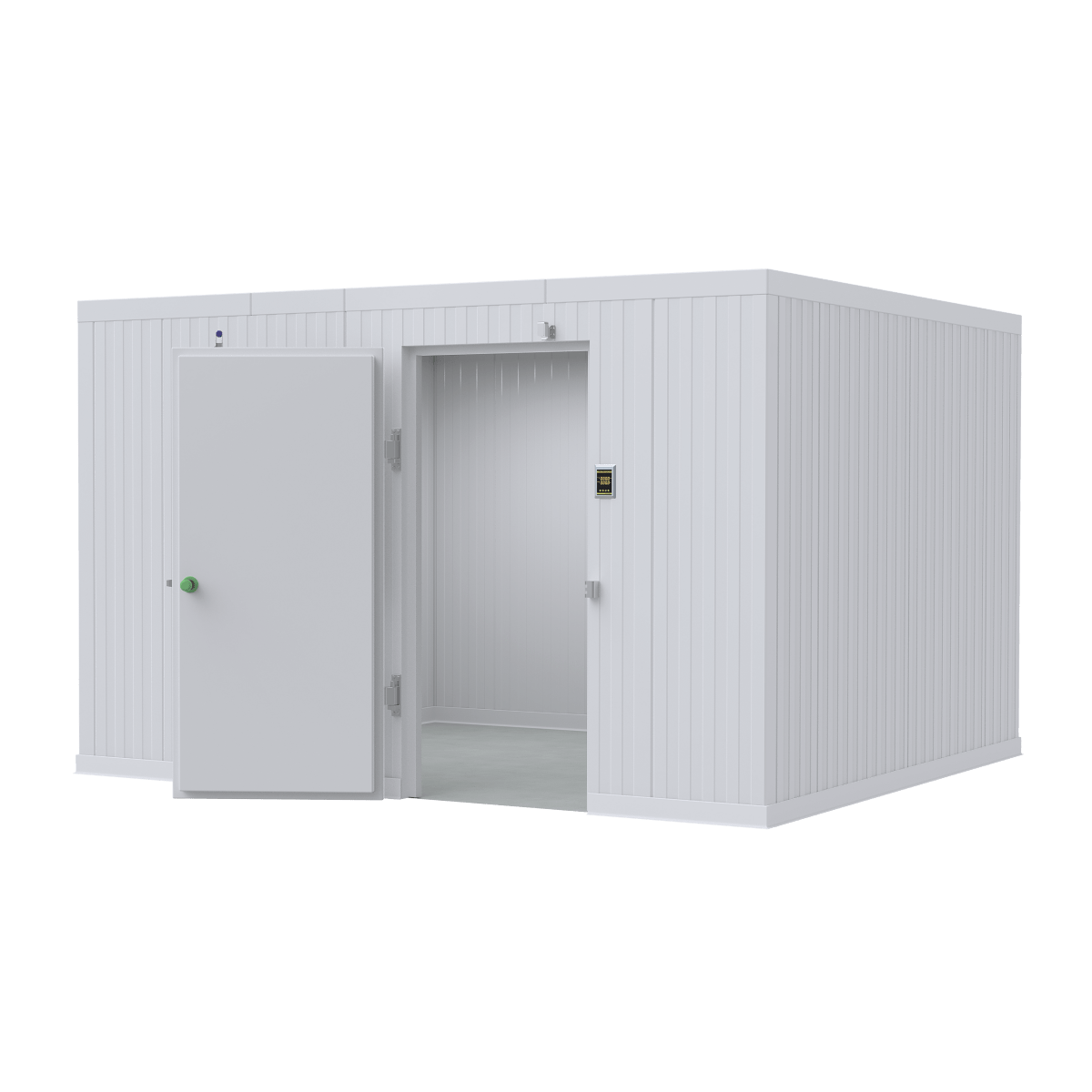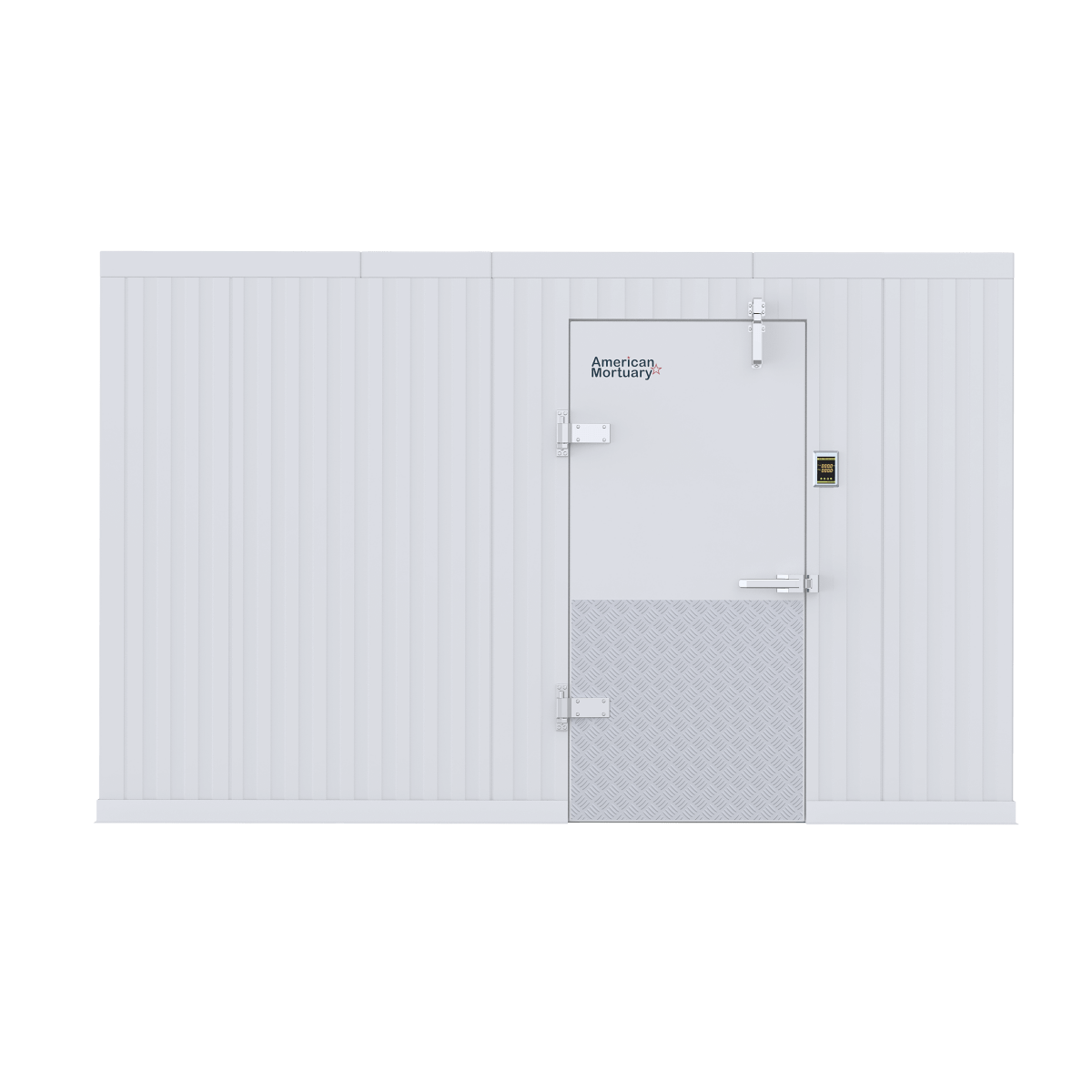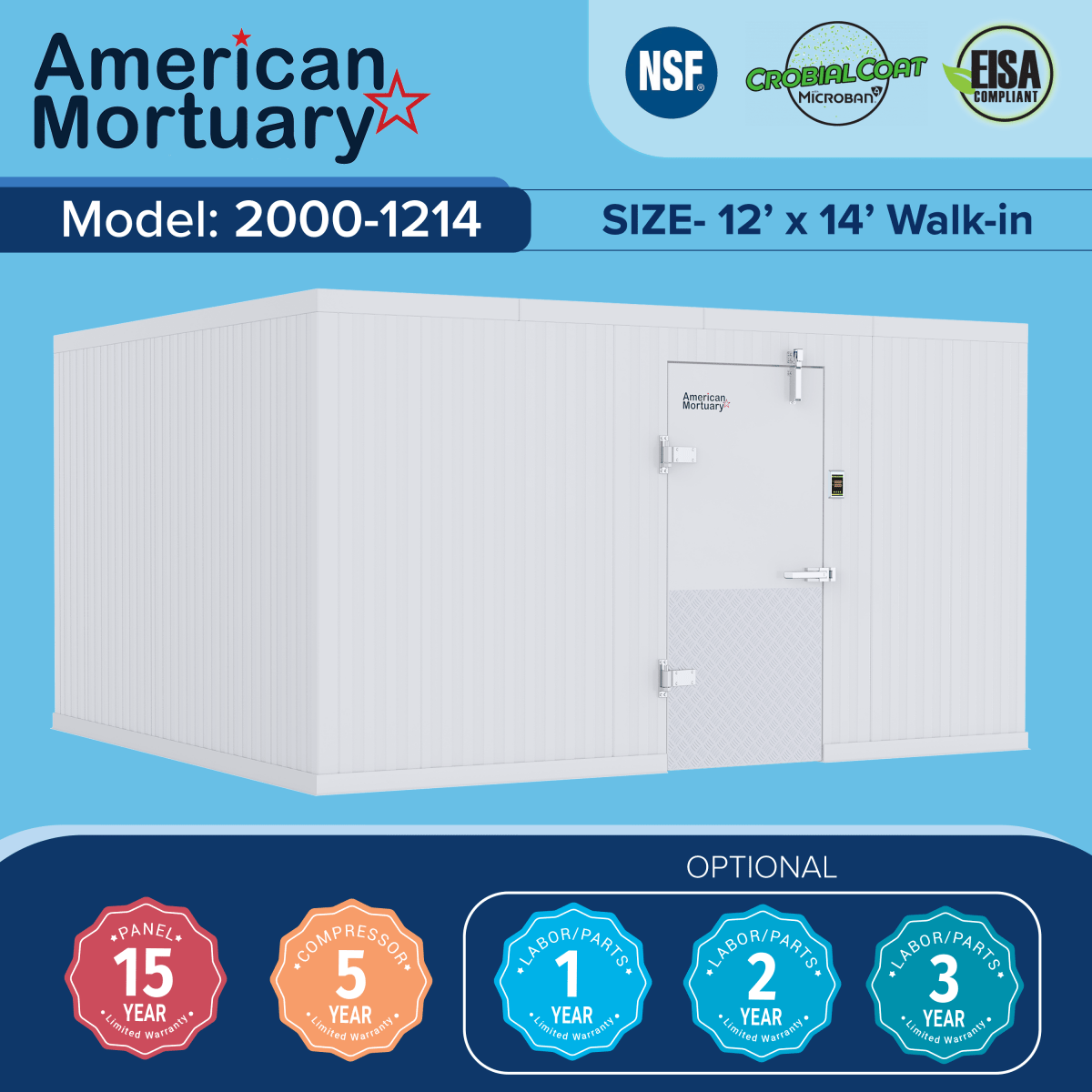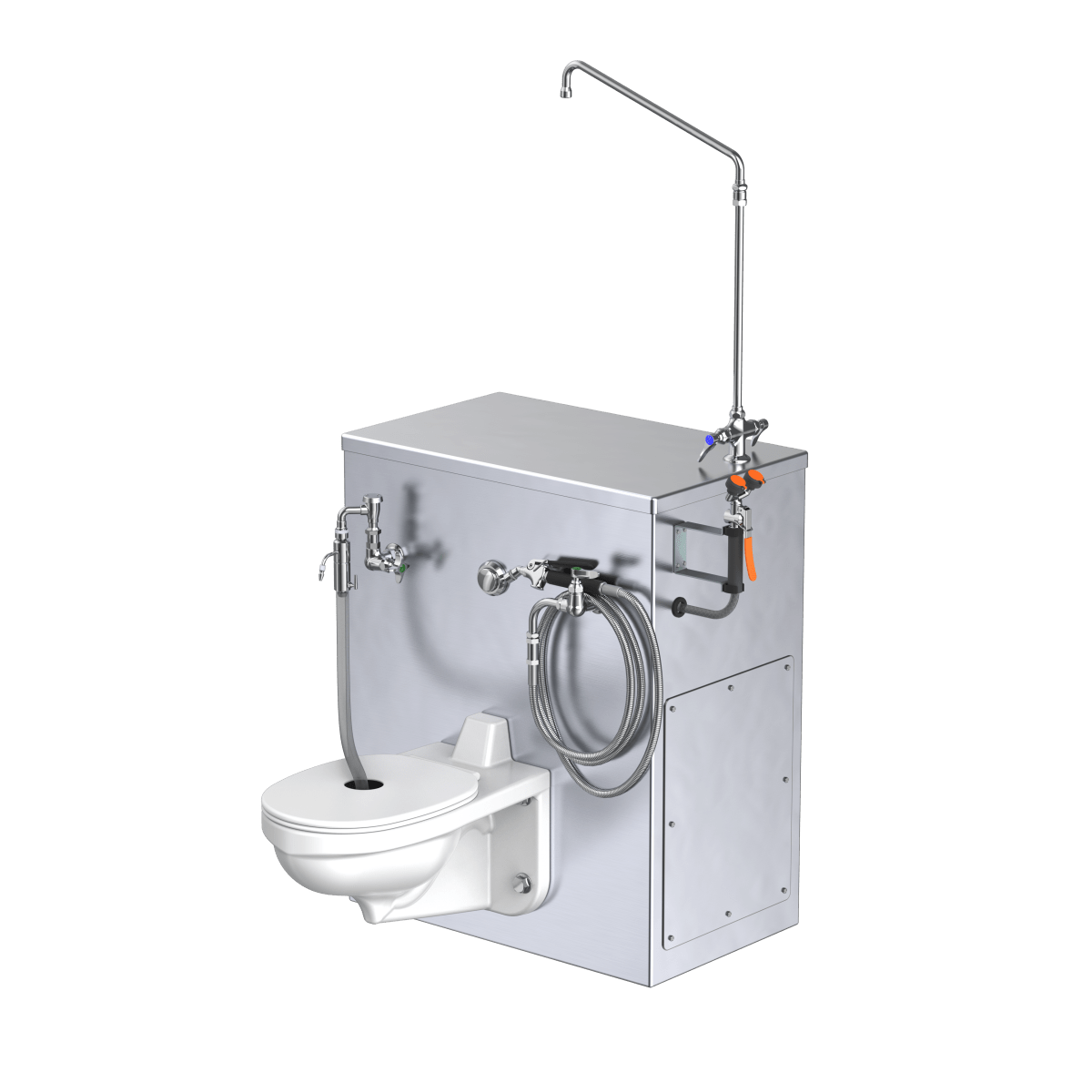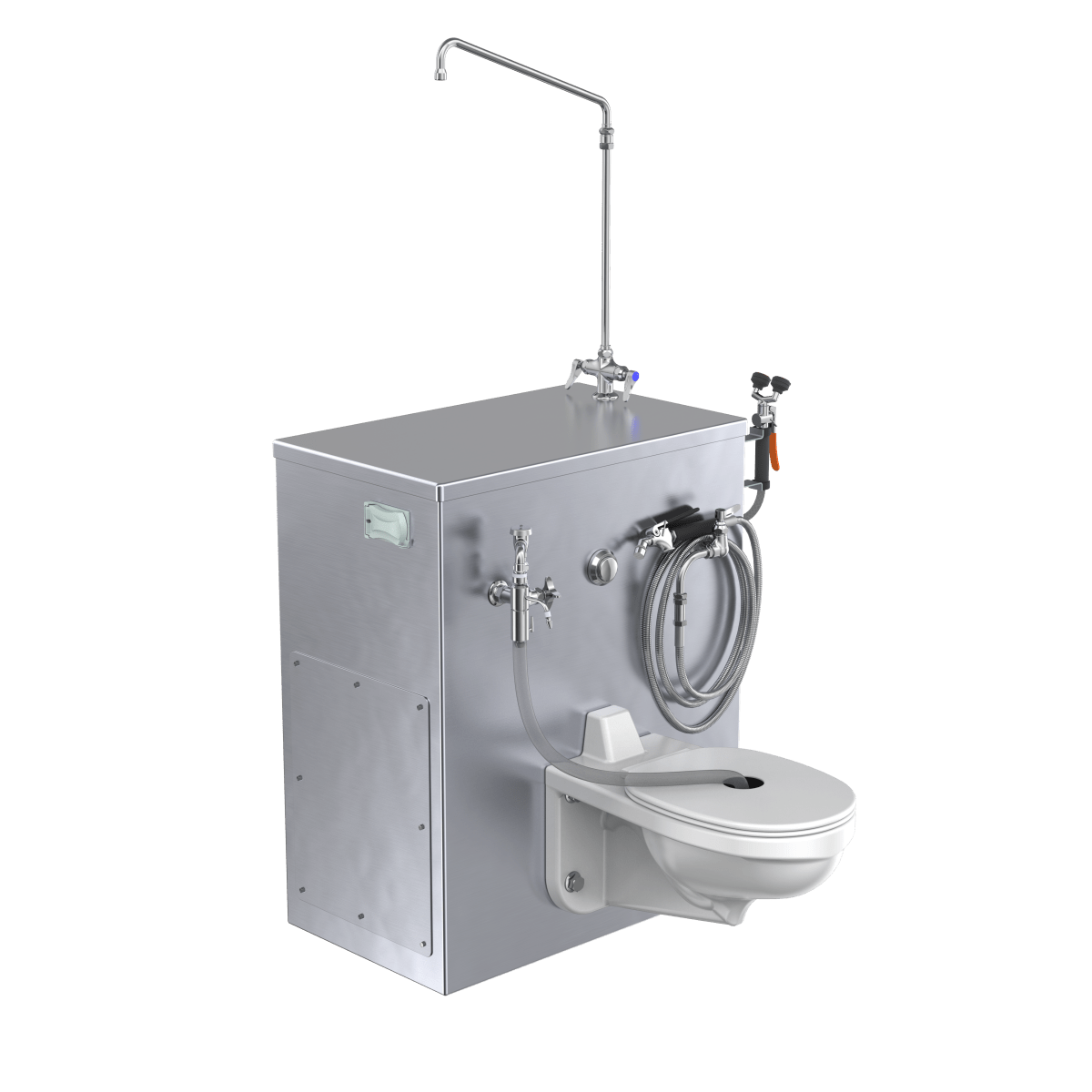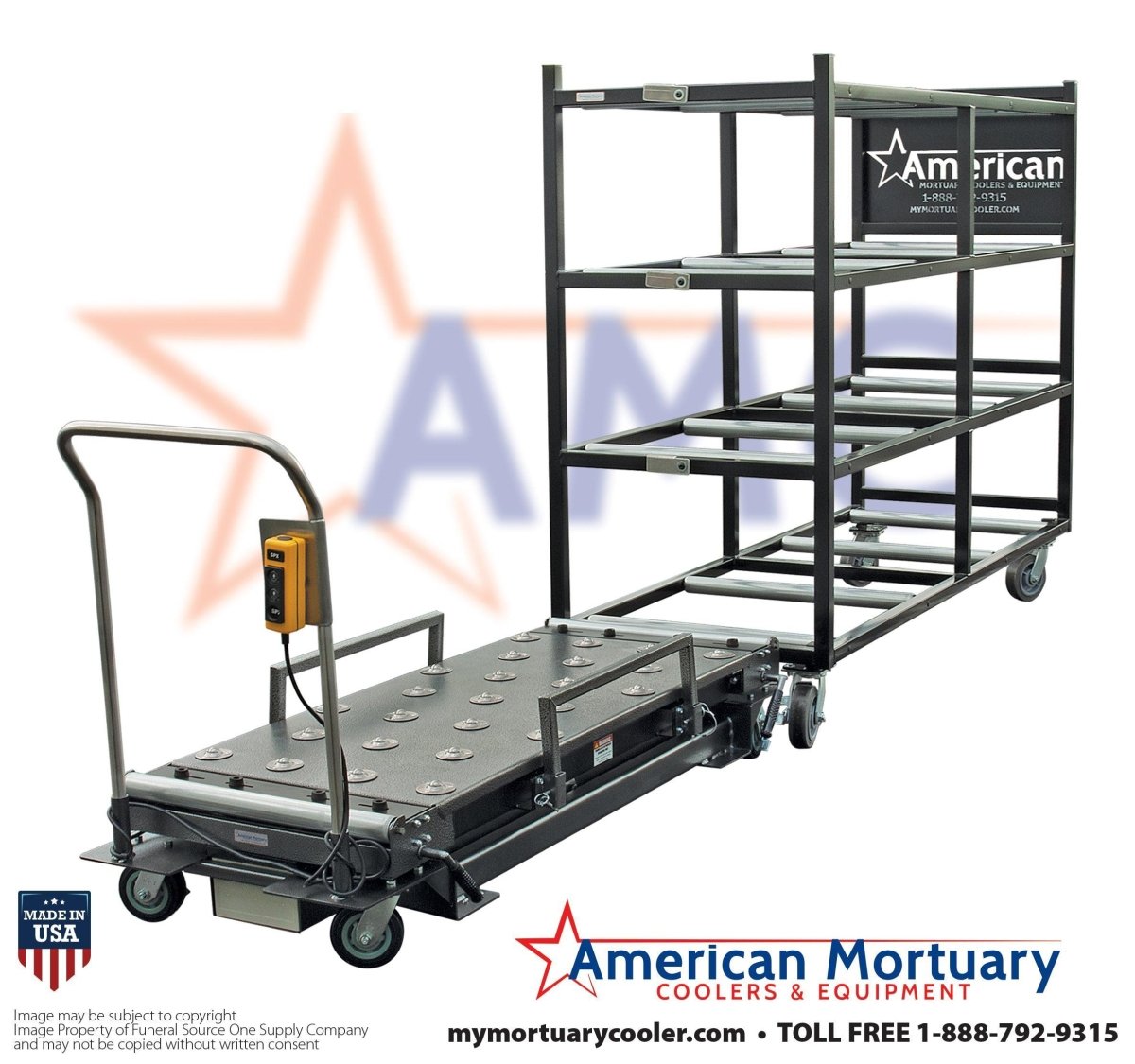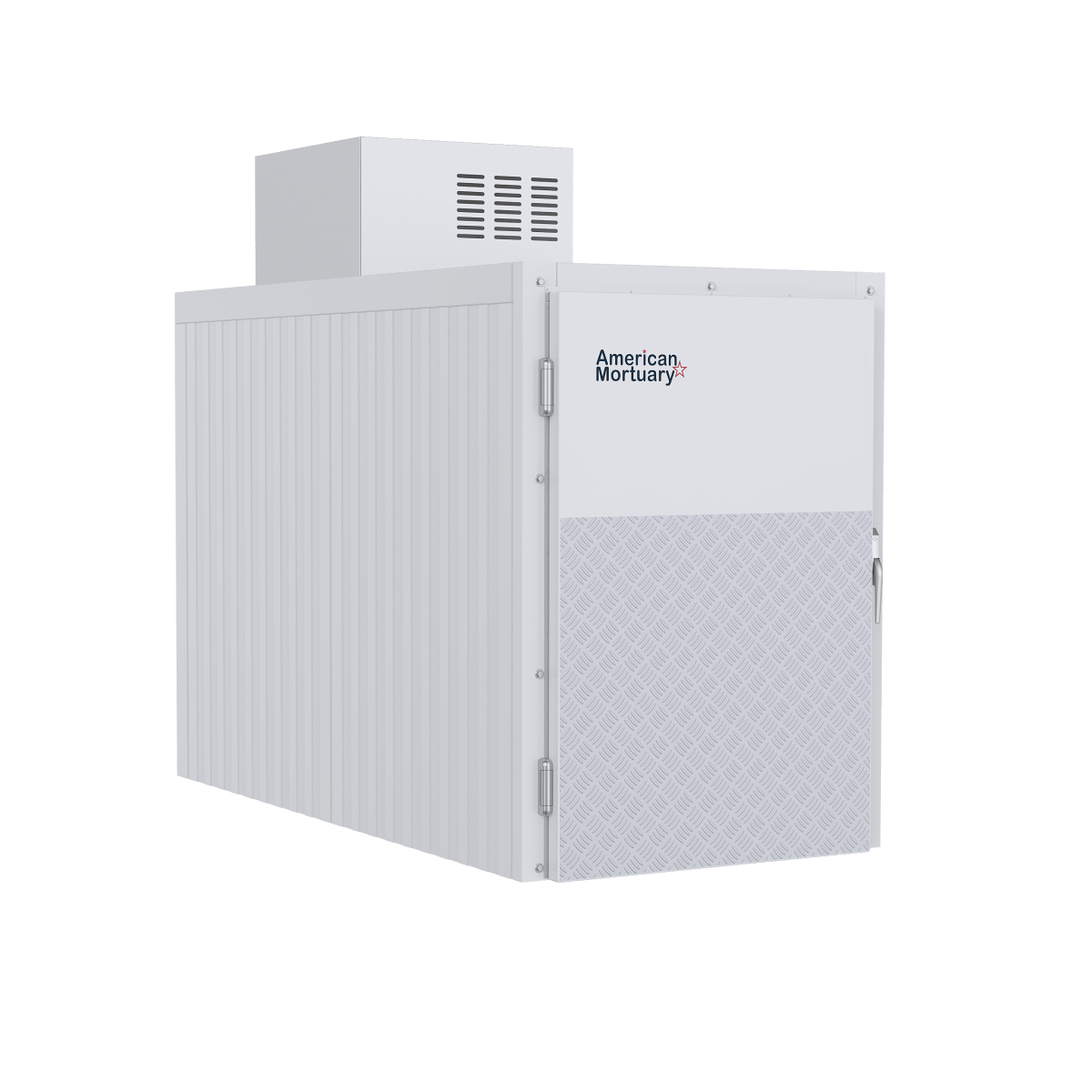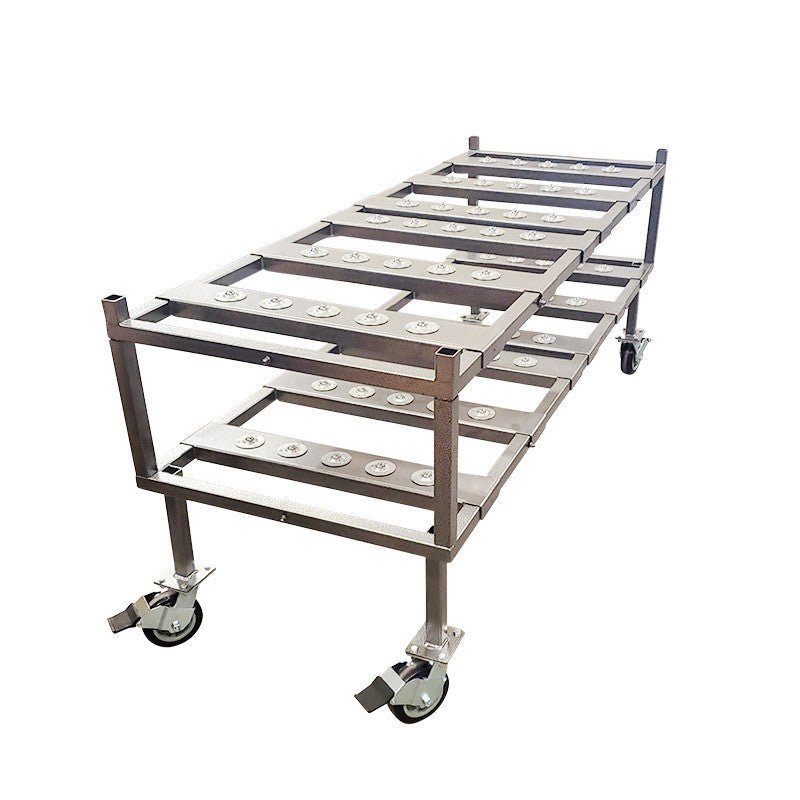Understanding Morgue Refrigeration Solutions
Morgue refrigeration units are specialized cold storage systems designed specifically for the preservation of human remains. These essential devices help prevent decomposition and maintain the integrity of bodies until final disposition or examination.
| Key Facts About Morgue Refrigeration Units |
|---|
| 🌡️ Standard refrigeration temperature: 4°C (39°F) |
| 🧊 Standard freezer temperature: -20°C (-4°F) |
| 👥 Available capacity: 1-body cabinets to 50+ body walk-ins |
| ⚙️ Common features: Telescoping trays, digital controls, safety releases |
| 🏗️ Construction: Stainless steel, 4-inch thick insulated panels |
Morgue refrigeration units come in various configurations to meet different facility needs. Whether you're managing a small funeral home or a large hospital morgue, understanding the options is crucial for making an informed decision.
The primary purpose of these units is to slow biological processes that lead to decomposition. By maintaining precise temperatures, these systems create an environment where tissue degradation is significantly reduced, providing families and medical examiners the necessary time for identification, examination, or funeral preparations.
Types of morgue refrigeration units include:
- Walk-in coolers/freezers: Large-capacity storage for 5-50 bodies
- Body box units: Compact cabinets holding 1-23 bodies
- Mobile/temporary units: For emergency response or transport
- Bariatric models: Specifically designed for oversized remains
I'm Mortuary Cooler, a national-level supplier of mortuary refrigeration equipment with extensive experience providing high-quality morgue refrigeration units to funeral homes, hospitals, and medical examiner facilities across the country. Our focus on American craftsmanship ensures that each unit meets the highest standards for durability and performance.

Morgue refrigeration units terms at a glance:
- funeral home fridge
- portable morgue refrigeration
- do refrigerated bodies at hospital morgues smell bad
What Are Morgue Refrigeration Units & Why Temperature Matters
When it comes to preserving human remains with dignity and care, morgue refrigeration units serve as the unsung heroes of the funeral industry. These aren't your standard kitchen refrigerators – they're specialized cold storage systems carefully engineered to maintain the precise conditions needed to slow decomposition and preserve remains until final arrangements can be made.
At their core, morgue refrigeration units operate at two primary temperature ranges:
- Refrigeration: 4°C (39°F) for short to medium-term preservation
- Freezing: -20°C (-4°F) when longer-term preservation is needed
"These temperature points aren't just picked out of thin air," explains our lead engineer at American Mortuary Coolers. "Each serves a specific purpose in the preservation process, affecting tissues in different ways to ensure dignity is maintained."
When a body enters one of our cooling units, what happens next is fascinating – the cooling curve begins immediately. This curve represents how quickly the body reaches the target preservation temperature. The faster this happens, the better the preservation results. Our high-quality units are designed to achieve rapid temperature reduction while maintaining consistent cooling throughout the entire storage compartment.

When choosing between a walk-in cold-room and a cabinet-style unit, capacity needs naturally play a role – but energy consumption is another important factor. Walk-in units typically require more energy initially but become more efficient per body when operating at or near capacity. It's something we help our customers consider based on their specific needs.
More info about temperature standards
Scientific Rationale for 4°C and –20°C
The science behind these temperature standards is both fascinating and practical. Let's look at what happens at each temperature point:
At 4°C (39°F), the refrigeration temperature significantly slows down autolysis – the natural process where cells begin to self-digest after death. This temperature also inhibits most bacterial growth without freezing tissues, preserving them for approximately 3-14 days. It's the ideal range for maintaining viable organs for potential transplantation and allows for easier handling during autopsy or preparation.
When we drop to -20°C (-4°F), the freezing temperature essentially puts decomposition on pause. This allows for long-term preservation lasting months, though it does solidify tissues, changing their properties. We typically recommend freezing when refrigeration alone isn't sufficient or for situations requiring extended preservation.
"The 4°C range is absolutely critical when organs might be preserved for transplant," notes Dr. Marcus Jennings, a pathologist who works with our equipment. "Freezing would damage the cell structures and make transplantation impossible."
Most facilities we work with follow strict protocols requiring precise temperature monitoring and documentation to ensure these standards are consistently maintained – something our units are designed to support.
Primary Components Keeping Temperatures Stable
Behind the scenes, several key components work in harmony to maintain those stable temperatures in our morgue refrigeration units:
The compressor system serves as the heart of the unit. These range from 1/3 HP for small units to multiple HP systems for walk-ins. As one facility manager in Dallas told us, "We had to upsize our compressor because summer temperatures here regularly exceed the standard 95°F rating."
Evaporator coils are carefully designed for optimal airflow around stored remains, with configurations specifically engineered to prevent direct contact with bodies – a detail that matters for both preservation and dignity.
Modern digital thermostats and controls offer precision that was unimaginable in older units, maintaining temperatures within ±1°C of the setpoint. This precision matters tremendously for consistent preservation.
Data logging and monitoring capabilities have become increasingly important. "Our units include high-low temperature monitoring with 7-day chart recording as standard," explains our product specialist. Many facilities now require this historical temperature tracking and remote monitoring for regulatory compliance.
For units located in unheated spaces or outdoor installations, low-ambient controls are essential. These prevent system failure in cold weather – a concern that varies dramatically depending on your location.
Finally, critical facilities often incorporate redundancy systems – backup cooling systems that prevent catastrophic failures if the primary system encounters problems.
At American Mortuary Coolers, we ensure all these components are calibrated to work together seamlessly, providing reliable temperature control even under challenging conditions. Because when it comes to preserving human remains, there's simply no room for compromise.
Types of Morgue Refrigeration Units
When it comes to storing human remains with dignity and care, one size definitely doesn't fit all. At American Mortuary Coolers, we've developed a comprehensive range of morgue refrigeration units to meet the diverse needs of funeral homes, hospitals, and medical examiners across the country.

Each facility has unique space constraints, capacity requirements, and budget considerations. That's why we offer everything from compact single-body cabinets to expansive walk-in coolers that can accommodate dozens of remains.
| Type | Capacity | Footprint | Mobility | Price Range |
|---|---|---|---|---|
| Walk-In Coolers | 5-50 bodies | 50-200 sq ft | Fixed | $15,000-$50,000+ |
| Body Box Units | 1-23 bodies | 10-50 sq ft | Fixed | $5,000-$30,000 |
| Mobile Units | 1-25 bodies | Varies | Portable | $7,000-$40,000 |
| Bariatric Units | 1-4 bodies | 15-60 sq ft | Some models | $8,000-$35,000 |
Walk-In Morgue Refrigeration Units
The workhorses of high-volume facilities, our walk-in morgue refrigeration units offer best capacity and flexibility. Many of our hospital and medical examiner clients prefer these units for their efficiency and expandability.
"Walk-in coolers give us breathing room during busy periods," shared one medical examiner from Illinois who recently upgraded their facility. "The cantilever rack system lets us access any position without disturbing other remains."
These units feature modular construction with prefabricated panels that can be customized to fit nearly any available space. The remote condensing option is particularly popular in noise-sensitive environments, allowing the mechanical components to be located away from quiet areas of the facility.
For facilities handling 5 to 50 bodies, nothing beats the efficiency and accessibility of a properly designed walk-in system. And since they're built with expansion in mind, they can grow alongside your facility's needs.
Body Box & Cabinet Units (2–23 Bodies)
Not every facility needs or has space for a walk-in cooler. Our cabinet-style morgue refrigeration units deliver professional-grade refrigeration in a compact, efficient package.
A funeral director in Tennessee recently told us: "Our 3-body refrigerator arrived fully assembled and was up and running as soon as we plugged it in. No special installation needed—it was literally ready to use the same day."
These units shine in their versatility. Available in configurations from 2 to 23 bodies, they feature options like end-loading or side-loading access, dual-temperature compartments, and even pass-through doors for facilities with preparation rooms on one side and viewing areas on the other.
The telescoping trays are a standout feature, extending fully for complete access while supporting weights up to 375 lbs on standard models. For those needing a bit more capacity without going to a specialized bariatric unit, we offer reinforced trays as an option.
Mobile & Temporary Morgue Refrigeration Units
The past few years have highlighted the critical need for flexible, deployable morgue refrigeration units that can respond to unexpected surges or disaster scenarios.
"During Hurricane Maria, we deployed six refrigerated trailers to Puerto Rico within 48 hours," our emergency response coordinator recalls. "Those units provided crucial dignity and preservation when the island's infrastructure was overwhelmed."
Our mobile solutions include trailer-based systems that can be operational within hours of delivery, container units for longer-term temporary use, and our innovative MERC System® that uses liquid cooling technology for applications where traditional refrigeration might be impractical.
For facilities that prefer not to purchase, Polar Leasing rental options provide flexible solutions without capital investment. These units can be particularly valuable during renovation projects, seasonal demand spikes, or disaster response.
Bariatric & Oversized Morgue Refrigeration Units
With changing demographics, the need for specialized morgue refrigeration units capable of accommodating larger individuals has grown significantly in recent years.
"Our standard units weren't cutting it anymore," explained a hospital morgue manager from Ohio. "The bariatric unit we installed not only provides appropriate storage but also protects our staff from injury with its roll-in design."
These specialized units feature wider doorways (typically 42" or greater), reinforced trays rated for up to 900 pounds, and safety features like hydraulic lifts that eliminate manual handling. The roll-in design allows direct transfer from transport carts, maintaining dignity and staff safety throughout the process.
While these units require more space and a higher initial investment, they've become essential components of comprehensive morgue planning. Many facilities now include at least one bariatric position, even in smaller installations.
Key Components & Features to Compare in Morgue Refrigeration Units
When shopping for morgue refrigeration units, it's easy to get overwhelmed by all the technical specifications. But understanding these key components isn't just about checking boxes—it's about ensuring you get a system that keeps your facility running smoothly for years to come.

Construction and Materials
The bones of any good refrigeration unit start with its construction. At American Mortuary Coolers, we use 4-inch thick insulated panels as our standard—these aren't just arbitrary measurements. With a K-value of ≤0.135 BTU/HR·ft²·°F, these panels keep the cold in and the heat out, saving you money every month on your electric bill.
"We chose Type 304 stainless steel for our front panels because it stands up to daily use without showing wear," explains Tom, one of our long-time customers in Florida. "It still looks brand new after three years of constant use."
The interior surfaces matter just as much. Whether you choose our .040" stucco embossed aluminum or opt for the seamless fiberglass upgrade, both options make cleaning a breeze—something you'll appreciate during those late-night intake procedures.
Our panels connect with cam-lock fasteners that create an airtight seal. As Sarah from our engineering team likes to say, "These aren't your grandfather's refrigerator doors—they're precision-engineered to maintain temperature within half a degree."
Safety and Compliance Features
Nobody plans to get locked inside a cooler, but we plan for it anyway. That's why every one of our morgue refrigeration units comes with interior door release handles that meet OSHA requirements. It's a feature we hope you'll never need, but you'll sleep better knowing it's there.
Digital temperature alarms provide peace of mind, especially for smaller facilities that don't have 24/7 staffing. When temperatures drift outside acceptable ranges, you'll know immediately—whether you're in the building or halfway across town.
"The vapor-proof LED lighting was a game-changer for us," shared Michael, a funeral director in Oregon. "Our old fluorescent lights would flicker and buzz, creating an uncomfortable environment. These new LEDs are silent, bright, and use a fraction of the electricity."
We've also started offering antimicrobial coatings on high-touch surfaces—a small upgrade that makes a big difference in maintaining a sanitary environment.
More info about option checklist
Loading & Unloading Mechanisms
The way you move bodies in and out of your morgue refrigeration units affects both your staff's well-being and your operational efficiency. Our telescoping slide rails have become our most popular option, with trays that extend fully for complete access without removing the body from the unit.
For larger facilities, our conveyor tray systems take things a step further by allowing horizontal and vertical movement within the unit. As Dr. Martinez at a county morgue in California told us, "The conveyor system has reduced staff injuries by 40% in the first year alone."
Roll-in racks are gaining popularity too, especially in facilities that handle frequent transfers. They eliminate lifting entirely by allowing transport carts to roll directly into the refrigeration unit.
For facilities dealing with bariatric cases, our scissor lifts provide ergonomic loading and unloading. "Before we got the scissor lift, we needed four staff members for certain cases," explained Director Williams from a Pittsburgh forensic lab. "Now we can safely manage with just two people, and they finish their shifts without back pain."
Monitoring, Energy & Hygiene Technology
Technology has transformed what's possible in morgue refrigeration units, especially when it comes to monitoring. Our IoT-enabled systems with CoolBot Pro technology send real-time alerts to your phone if temperatures drift outside acceptable ranges. You'll also get a 30-day temperature history—invaluable for both quality control and regulatory compliance.
For facilities with stricter documentation requirements, our 7-day chart recorders provide physical proof of consistent temperature maintenance.
"The CoolBot retrofit option saved our small funeral home thousands," shared Linda, a funeral director in Maine. "We were able to convert our existing walk-in cooler instead of buying a completely new system."
Energy efficiency isn't just good for the planet—it's good for your budget too. Our systems include smart features like automatic light activation and blower shutdown when doors open, reducing unnecessary energy use.
The seamless interior construction of our units eliminates the wood framing found in cheaper models. This not only reduces condensation issues but also creates a more hygienic environment that's easier to keep clean.
At American Mortuary Coolers, we understand that these units are more than just equipment—they're an essential part of treating the deceased with dignity and the living with compassion. That's why we build each unit as if it were going into our own family's funeral home.
Selecting the Right Morgue Refrigeration Units for Your Facility
Finding the perfect morgue refrigeration unit for your facility doesn't have to be overwhelming. At American Mortuary Coolers, we've guided countless clients across our service regions through this important decision, ensuring they get exactly what they need without unnecessary bells and whistles.

Capacity Planning and Spatial Considerations
Before getting your heart set on a specific model, take a moment to think about your real-world needs. I remember working with a funeral director in Columbia, SC who was absolutely certain they needed our largest unit – until we sat down and discussed their actual capacity requirements.
"When we installed a new 4-body unit for that funeral home in Columbia, we had to carefully measure their hallway turns and doorframes to ensure the unit could be delivered intact," our logistics manager often shares with new clients.
Start by honestly assessing:
Average and Peak Volume – What's your typical daily need, and how often do you experience surges? No need to pay for capacity that sits empty 99% of the time.
Floor Space Limitations – Those blueprints might look spacious on paper, but remember to account for staff movement and door clearance. An extra 36 inches of workspace around the unit can make all the difference in daily comfort.
Ceiling Height – This is particularly important if you're considering multi-tier systems. We've seen many facilities with beautiful high ceilings that seem perfect for stacked units—until you factor in sprinkler systems and lighting fixtures.
Entry Path Dimensions – The unit needs to actually make it into your building! Those 90-degree hallway turns have derailed many installation plans at the last minute.
Technical and Infrastructure Requirements
Your morgue refrigeration unit has to work with your building's existing systems, not against them.
A facilities director from Dallas once told me, "We had to reinforce the floor in our older building before installing our 8-body cooler—something we hadn't initially considered in our budget." Little surprises like this are common but can be avoided with proper planning.
Electrical Requirements matter tremendously. Smaller units (2-3 bodies) typically use standard 115V power, making them plug-and-play in most settings. Larger units require 208-230V service, which might mean calling an electrician before delivery day.
Ambient Temperature Limits affect performance more than you might think. Standard compressors are rated for environments up to 95°F. If your unit will be in a non-air-conditioned space in Phoenix or Miami, we'll need to upsize the cooling system accordingly.
Ventilation Needs are often overlooked. Those compressors generate heat that needs somewhere to go. In tight spaces, this can actually raise the room temperature enough to affect efficiency.
Floor Loading Capacity becomes critical with larger units. A fully loaded 8-body cooler distributes thousands of pounds across its footprint—something older buildings weren't always designed to handle.
Workflow Integration
The perfect unit on paper can become a daily headache if it disrupts your staff's workflow. We've seen beautiful facilities rendered inefficient by poor placement decisions.
Proximity to Preparation Areas should be a top priority. Every extra foot of transport distance adds up when you're moving remains multiple times daily.
Door Configuration options (end-opening, side-opening, or roll-in) should match your room layout, not force awkward workarounds.
Staff Ergonomics might seem secondary until you watch your team struggle with a poorly designed loading height. Your staff's backs will thank you for thoughtful planning here.
Future Expansion Potential is worth considering even if it seems unnecessary now. Modular systems give you flexibility as your needs evolve.
Long-Term Considerations
The sticker price is just the beginning of your relationship with your morgue refrigeration unit.
Warranty Terms vary widely. Our standard coverage includes 10 years on panels and 1 year on compressors, but we're always transparent about what's covered and what isn't.
Service Accessibility will matter enormously the first time you need maintenance. Units with externalized refrigeration components might take up more space, but they'll save you headaches (and service fees) down the road.
Energy Efficiency impacts your bottom line every month. Higher R-value insulation and modern compressors might cost more upfront but pay for themselves over time.
Durability of Materials makes a difference in demanding environments. There's a reason we recommend stainless steel exteriors for most applications—they simply last longer and maintain their appearance with minimal care.
Morgue Refrigeration Units for Hospitals & Forensic Labs
Hospitals and forensic labs have unique challenges when it comes to morgue refrigeration units. The environment is typically high-turnover, with remains coming and going frequently throughout the day.
"Our hospital in Chicago upgraded to a walk-in system with digital monitoring after experiencing a failure in their older unit," our regional sales manager often recounts. "The new system includes redundant cooling and automatic alerts to facilities management if temperatures deviate from setpoints."
For these settings, we typically recommend systems with continuous monitoring capabilities—24/7 temperature logging with alerts that can be routed to multiple staff members. Many of our hospital clients also require backup power connection options that automatically switch over during outages.
The integration with autopsy facilities often drives placement decisions, creating a logical workflow between examination areas and storage. Many forensic facilities also require both refrigeration (4°C) and freezer (-20°C) compartments for different types of evidence preservation.
Morgue Refrigeration Units for Funeral Homes
Funeral homes have their own set of priorities that differ significantly from medical facilities.
A funeral director in Atlanta shared with us, "We chose a 3-body side-loading unit because it fit perfectly in our preparation room and operates so quietly that families in nearby viewing rooms aren't disturbed."
Quiet operation becomes paramount when your refrigeration unit might be near public spaces. We've developed specially insulated compressor housings for these situations.
Most funeral homes find that moderate capacity (2-8 bodies) is sufficient for their needs, even during busier periods. The units often need to blend in aesthetically with the rest of the facility, sometimes requiring custom exterior finishes to match the décor.
Some funeral homes also need units that can accommodate partial or full caskets, which requires special dimensions and weight considerations.
Emergency Surge & Mobile Morgue Refrigeration Units
If the past few years have taught us anything, it's the value of preparedness. Emergency and surge capacity needs have moved from theoretical to essential for many facilities.
"During the pandemic, we provided container-based refrigeration units to three hospitals in the Rocky Mountain Region within 72 hours of their request," our emergency response coordinator often shares. "These units remained in service for months, providing critical overflow capacity."
For emergency situations, rapid deployment capabilities are essential—units that can be delivered and operational within hours, not days. Many facilities now plan for scalable solutions that can grow with need rather than committing to permanent large installations.
The most effective emergency units offer self-contained operation, requiring minimal connection to facility utilities. They should also feature temporary installation characteristics that don't require permanent modifications to your building.
With thoughtful planning and the right partner, selecting the perfect morgue refrigeration unit becomes a straightforward process that results in a solution perfectly custom to your facility's unique needs. And remember, we're here to help every step of the way.
Maintenance, Compliance & Emerging Trends
Keeping your morgue refrigeration units running smoothly isn't just about performance—it's about respect for the deceased and the families you serve. At American Mortuary Coolers, we understand this deeply, which is why we design our units with both serviceability and regulatory compliance built into every panel and component.
Regulatory Compliance
When it comes to storing human remains, cutting corners on compliance simply isn't an option. Several important standards govern our industry:
NSF Approval ensures the materials and construction methods meet strict sanitation requirements—essential when handling the deceased. As our compliance officer often reminds clients, "All our Polar King mortuary coolers and freezers meet strict sanitation requirements and are NSF approved. This is non-negotiable for facilities handling human remains."
Other critical regulations include OSHA 29 CFR 1910 for workplace safety (including those all-important emergency release mechanisms), EISA 2007 energy efficiency requirements for walk-in panels, and ASTM E84 standards for smoke and flame spread ratings.
Maintenance Best Practices
I recently spoke with a maintenance supervisor from our Los Angeles service area who shared, "We've had the same morgue cooler for over 15 years because we're religious about quarterly maintenance checks." His experience highlights what we've been telling customers for years—consistent care dramatically extends unit life.
Your maintenance calendar should include:
Quarterly gasket inspections to check for tears, compression issues, and proper sealing—think of gaskets as the first line of defense against temperature fluctuations. Condenser coil cleaning removes the dust and debris that can significantly reduce efficiency and strain your system. Annual temperature verification ensures your monitoring systems remain accurate, while regular door hinge and latch lubrication keeps everything opening and closing smoothly.
Don't forget about the interior! Proper sanitization protocols using manufacturer-approved cleaning agents keep your morgue refrigeration units hygienic without damaging sensitive components.
Cleaning and Sanitation Protocols
Maintaining impeccable cleanliness inside your morgue refrigeration unit isn't just about appearances—it's fundamental to proper operation and dignity in care.
Start by establishing a regular cleaning schedule based on your facility's usage patterns. Use only non-abrasive, hospital-grade disinfectants that are compatible with your unit's materials—using the wrong chemicals can damage surfaces and components. Pay special attention to high-touch areas like door handles, gaskets, and tray surfaces where bioburden tends to accumulate. And always maintain detailed cleaning logs—they're invaluable for regulatory compliance and can help identify patterns if issues arise.
Emerging Technologies and Trends
The world of mortuary refrigeration is evolving faster than many realize. Today's innovations are reshaping what's possible in our industry.
Remote diagnostics systems can now predict potential failures before they occur—imagine getting an alert that your compressor is showing early signs of strain before it actually fails during a holiday weekend. Liquid-cooling MERC Systems represent a significant leap forward in efficiency. As our innovation director explains, "The MERC System® is the first human remains cooling technology using liquid cooling technology. It represents a significant advancement in portable and energy-efficient preservation."
Other exciting developments include glycol loop redundancy providing backup cooling without duplicating expensive compressors, eco-foam insulation delivering higher R-values with reduced environmental impact, and AI temperature forecasting that uses predictive algorithms to adjust cooling based on your facility's unique usage patterns.

We're particularly excited about the integration of sustainable materials into newer morgue refrigeration units. The latest panel technologies are not only more environmentally friendly but actually outperform older materials in terms of insulation value and longevity.
More info about cold-storage options
Staying ahead of these trends isn't just about having the newest technology—it's about providing better service, greater reliability, and more dignified care for the families who depend on your facility during difficult times.
Frequently Asked Questions about Morgue Refrigeration
What temperature should a morgue refrigerator and freezer maintain?
When it comes to preserving human remains, temperature isn't just a setting—it's the foundation of proper care. Morgue refrigeration units operate at very specific temperature ranges that science has proven optimal:
For refrigerators, 4°C (39°F) is the sweet spot for short to medium-term preservation. At this temperature, nature's decomposition processes slow dramatically while tissues remain pliable for examination or preparation work.
For freezers, we maintain -20°C (-4°F) when long-term storage is needed. This essentially puts decomposition on pause, though it's worth noting that freezing does change tissue properties in ways refrigeration doesn't.
"What many people don't realize is that consistency matters just as much as the temperature itself," explains our technical specialist at American Mortuary Coolers. "Our units maintain temperatures within just one degree of the target, even when doors are opening and closing throughout a busy day."
Today's modern units come equipped with digital displays that show current temperatures at a glance, along with alarm systems that alert staff if temperatures drift outside acceptable ranges. Many facilities now request 7-day temperature recording capabilities for their quality assurance programs and to meet increasingly strict regulations.
How do telescoping trays improve safety and ergonomics?
The telescoping trays in our morgue refrigeration units aren't just a convenience feature—they're a game-changer for staff safety and workflow efficiency.
These ingenious systems allow trays to extend completely outside the refrigerator while remaining fully supported. This means staff can access the entire body without removing it from refrigeration, dramatically reducing the need for lifting and transferring—a common source of workplace injuries in morgue settings.
"Before we upgraded to units with telescoping trays, our staff was constantly complaining of back pain," a Pittsburgh pathologist told us recently. "Now they can perform preliminary examinations without removing remains from refrigeration, which is better for their backs and helps maintain stable temperatures too."
In our higher-end units, we use nylon rollers for whisper-quiet, effortless movement. Standard trays support 375 pounds, but we offer improved capacity options for facilities with different needs. The full-extension design also provides complete head-to-toe visibility, which is essential for identification procedures and initial examinations.
Can one unit handle bariatric remains without modifications?
This is one of the most common questions we receive, and the honest answer is that standard morgue refrigeration units do have limitations when it comes to bariatric cases:
Standard doors are typically too narrow for oversized trays. Regular trays and slides usually aren't rated for weights exceeding 400 pounds. And the compartments themselves may simply be too narrow for larger individuals.
For facilities that regularly handle bariatric cases, we recommend specialized units designed specifically for this purpose. Our bariatric roll-in refrigerators feature wider doors (typically 42 inches or greater), reinforced trays and rollers capable of supporting up to 900 pounds, and some even include hydraulic assistance to help staff manage these cases safely.
One funeral director in Arizona shared with us: "We were struggling with our standard unit until American Mortuary Coolers provided a bariatric-specific solution. The difference was night and day—not just for our staff's safety, but for maintaining the dignity of the deceased and their families."
For facilities with occasional bariatric needs but limited space, we often design hybrid units with one or two oversized compartments alongside standard-sized spaces. This gives you flexibility without sacrificing valuable floor space.
At American Mortuary Coolers, we understand that every facility has unique needs. That's why we work closely with each customer to design solutions that work for their specific situation—whether that's a small funeral home in rural Tennessee or a major metropolitan medical examiner's office.
Conclusion
Selecting the right morgue refrigeration unit is more than just a purchase decision – it's about honoring the deceased with dignity while ensuring your staff can work safely and efficiently. At American Mortuary Coolers, we've spent years listening to the unique challenges faced by funeral directors, pathologists, and medical examiners across the country.
Based in the heart of Tennessee, our team takes genuine pride in crafting custom-built refrigeration solutions that stand the test of time. We deliver these specialized units directly to facilities across all 48 contiguous states, bringing a personal touch to what might otherwise feel like a purely technical transaction.
What sets our American-made morgue units apart? It's the attention to detail that comes from understanding the daily realities of those who care for the deceased:
Premium materials that withstand years of constant use without deteriorating, because we know replacement disrupts your important work.
Energy-efficient designs that keep your utility bills manageable while maintaining perfect temperature stability.
Thoughtful ergonomic features that protect your staff from injury and make difficult days a little easier.
Full regulatory compliance built into every unit, so you never have to worry about inspection day.
Custom solutions custom to your specific space constraints and workflow patterns.
"I was hesitant about ordering something this important sight unseen," a funeral director from Omaha recently told us, "but the team at American Mortuary Coolers walked me through every specification and delivered exactly what we needed. Five years later, it still runs perfectly."
From single-body cabinets for small funeral homes to extensive walk-in systems for major medical centers, we understand that one size definitely doesn't fit all. That's why we start every project with questions rather than a sales pitch – we want to understand your specific challenges before recommending solutions.
As refrigeration technology continues to advance, we remain committed to incorporating meaningful innovations while never sacrificing the reliability that's become our hallmark. We're particularly excited about new energy-saving technologies that will help facilities reduce their environmental footprint while improving performance.
Thank you for considering American Mortuary Coolers as your partner in this essential aspect of your facility's operations. We'd be honored to help you find the perfect refrigeration solution for your unique needs.



